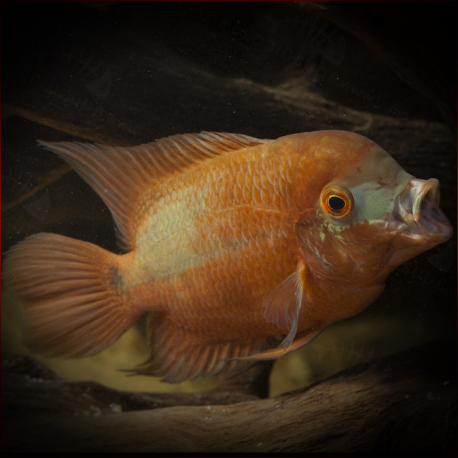More info
Datasheet
| Minimum Tank Size | 250 litres / 66.04 US gallons |
| Maximum Size | 30.0cm / 11.81inches |
| Temperature | 25°C / 77.00°F - 30°C / 86.00°F |
| Hardness | 0-12ºdH |
| pH | 5.0-7.0 |
General Description
The Chocolate Cichlid, scientifically known as Hypselecara Temporalis, is a member of the Cichlidae family, specifically the Cichlasomatinae subfamily. With a maximum size of 30.0cm, this species is omnivorous, feeding on a variety of invertebrates, algae, and other plant matter in the wild. It displays a calm demeanor, making it suitable for community tanks with large fish such as cyprinids, characins, catfish, Loricariids, and even other South American cichlids in very spacious tanks.
Aquarium Setup
For this species, a tank size of at least 250 litres is recommended, with a sand substrate preferred. Adding large pieces of bogwood and smooth boulders as decor is ideal. Although they typically do not dig, plants can be incorporated. To facilitate breeding, placing vertical pieces of slate along the tank's sides provides potential spawning sites. Water conditions should be maintained at a pH range of 5.0-7.0, hardness of 0-12°dH, and a temperature between 25-30°C.
Behaviour
Despite its sizable stature, the Chocolate Cichlid exhibits a peaceful temperament, allowing for cohabitation with appropriately sized tankmates. It thrives in slow-flowing rivers with silt-laden substrates in the wild.
Feeding and Diet
In its natural habitat, the Chocolate Cichlid feeds on invertebrates, algae, and plant matter. In captivity, they accept a varied diet that includes live, frozen, and dried foods. Ensuring a diverse diet is essential for their well-being.
Reproduction & Dimorphism
Details about the reproduction and sexual dimorphism of the Chocolate Cichlid are scarce in available information. However, providing suitable breeding conditions, such as vertical slate pieces in the tank, can potentially trigger spawning behavior.
Habitat and Distribution
The Chocolate Cichlid is widely distributed across parts of Peru, Colombia, Venezuela, and Brazil. It can be found in various rivers, including the Ucayali, Amazonas, Solimões, Amapá, and Oyapock rivers. Their preferred habitats are slow-flowing rivers with silt-laden substrates.

